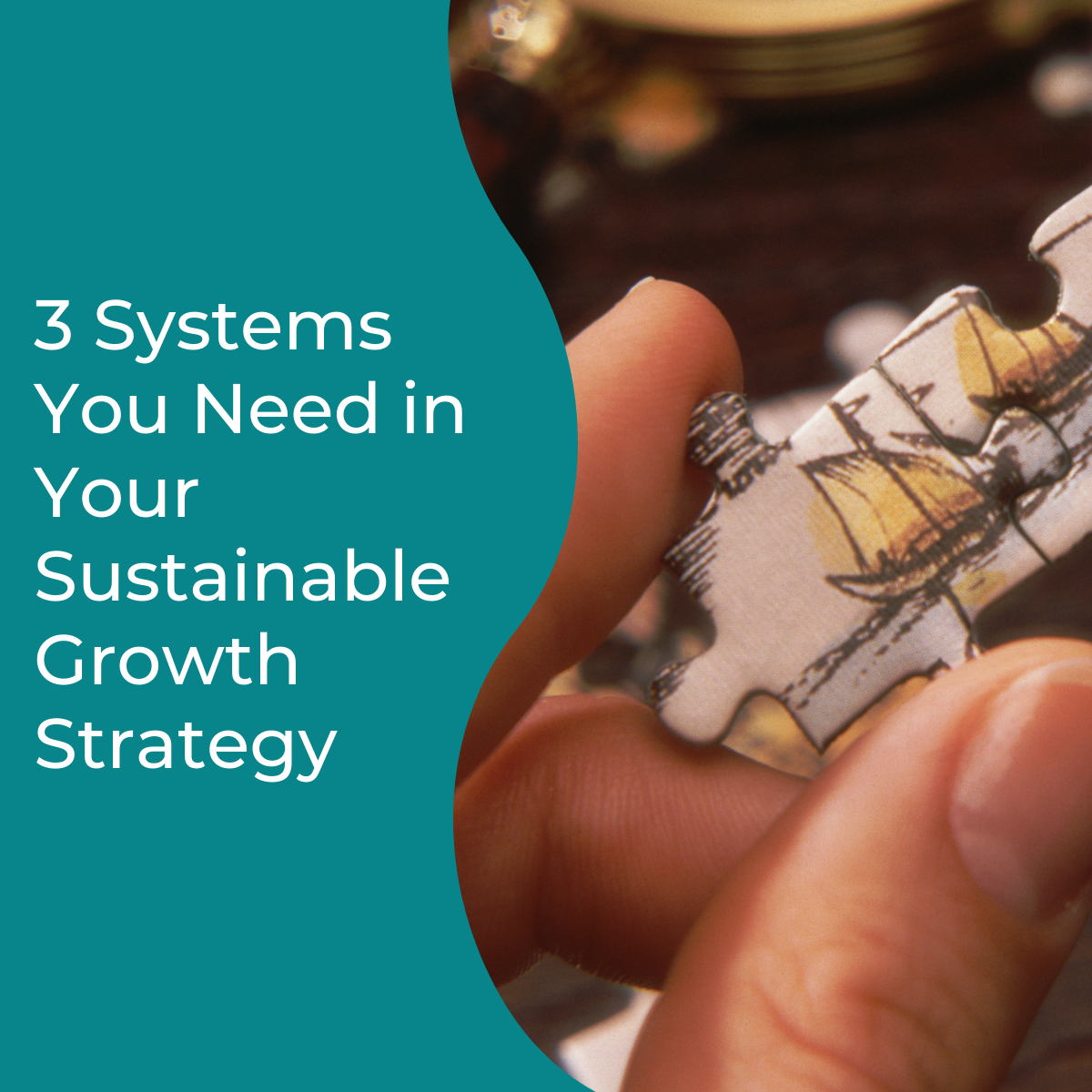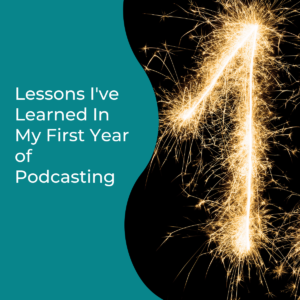Do you have a strategy to achieve sustainable growth in your business?
Sustainable growth – it’s a term we hear all over the place and see online all the time and something we all want. But what exactly is it?
My definition of sustainable growth is having the needed systems in place to operate your business at the desired capacity. This allows you to maintain that without it requiring additional resources and without compromising what is most important to you.
So how can you achieve it?
The simple answer, you need systems in place. A streamlined system reduces mistakes, produces consistent results, and eliminates chaos and confusion. It’s the foundation successful businesses are built on.
When you have a viable business and start generating income, you may start to grow too fast. If you don’t have the needed systems in place, you become overwhelmed. Not to mention you may not be providing the best customer experience which may also be costing you money. It’s like seven times easier to keep a client than it is to get a new one. So client satisfaction is important! But you can’t achieve that without systems.
The other issue, you may hit a plateau and can’t figure out how to increase your revenue without it requiring more resources. The cause? Not having the right systems in place to run your business more efficiently.
Now there are six core systems every business needs to achieve sustainable growth. Click here to get detailed information on the three systems you need no matter what phase your business is in. These systems are your filing system, your scheduling system and your communication system. When these three systems are missing or have gaps, they have a huge impact on your client experience.
Once those three systems are in place you can turn your attention to the three systems I’m going to talk about today. They are vital parts of a sustainable growth strategy. They are a money management system, a backup system and a sales & marketing system. So the first one sounds like a no brainer but it’s one that is commonly overlooked.
Money Management System
You may be thinking well that is just common sense that you need to keep your eye on your money. But most business owners do not know their numbers and because of that many small businesses do not survive.
Let me share a real life experience with you. When I was working as a VA, one of my clients owned a catering business. In her first year she made over $70k. But at the end of that year, her bank account did not reflect that type of balance, not even half of that. And as we started to work together I identified the issue, she was missing a money management system. So she had no idea what supplies were costing her. What her personnel costs were or what her profit margin could be because nothing was being tracked. Don’t let that be you!
A money management system helps you keep a finger on the pulse of your money.
Money going out is recurring monthly expenses (subscriptions for tools we use in our systems), annual expenses that are recurring (professional memberships, tools, website fees) and one time expenses (conferences, networking events, professional development). You can start by creating a spreadsheet with all of these items on it. Include the date it has to be paid or comes out of your account, the amount and where you are paying it from. That way if you have to change a credit card number, you can easily identify where that needs to be done.
We tend to forget things that are automatically deducted whether they’re charged to our credit card, or automatically deducted from our accounts. But you need to track that to make sure that you are not double paid, or subscribe to things that you no longer need.
As far as money coming in, whether you invoice or have paid appointments, you need to track that money as it comes in. This is also very important if you do monthly auto-billing, you need to have a process for when payments are declined or when payments are late. This is also where your templates come into play.
So you can see where all of the systems kind of work hand in hand to help you operate more efficiently. Most importantly, you see how important it is to track your money if you want to achieve sustainable growth
Now if you want some tips to help you create a basic bookkeeping system, be sure to check out this blog post which is the transcript of my chat with Stacey Isetta of The Small Business BFF which stands for best financial friend.
Backup System
A backup system is Plan B to keep your business running. As a solopreneur, you need this so that your business can survive and thrive without you. The best time to prepare is before an emergency arises.
There are multiple areas you need to have a backup plan in place for. Your computer files is the first one. Do not store the important documents you use to run your business on your hard drive because that means you’re the only person that can access that information. Not to mention you will lose everything if your hard drive crashes and dies, which I have had happen to me twice. What saved me from losing years of work? Having everything stored in Google Drive and Dropbox.
This is very critical, if you plan to hire a virtual assistant in the future. They need access to the files so that they can complete their work. You don’t become the bottleneck because the document they need is on your hard drive.
You also need a backup process in place for your website and your blog content. Let me tell you, I have experienced my email and my website being hacked and it wasn’t fun to get that cleaned up. But because I had backups, my website was able to be cleaned and put back in order because the backups were not infected so I was able to upload the content and keep things moving. If you do not backup your files that cannot happen.
The same goes for your CRM contacts! I recommend you download your email subscribers at least once a quarter, and no less than twice a year. This gives you that parachute in the event something happens to your email marketing platform, you do not lose all of your contacts.
And when you start outsourcing, you definitely need to have a plan B for when that person is out. So for instance, if you have a virtual assistant who handles some major tasks like following up with clients, responding to emails, sorting your inbox, etc. What happens when that person is on vacation?
Your business should not come to a halt. But if you have not identified what Plan B is in that instance, then you’re going to have some problems. So identify that backup process in advance!
Most importantly, you need an emergency preparedness plan. Remember this, if you do not have documented processes and systems in place, you do not have a business you have a you. That means if you don’t do it, it doesn’t get done. So what happens to your business if something happens to you? Food for thought right?!
This is where emergency preparedness planning comes into play. I know someone who had a major medical incident that shut her business down for over six months. Sad to say that was the end of her business.
So what does this emergency preparedness plan need to have in it? You need to identify emergency point of contacts and how to keep your business operating. If you’re not available, it could be for any type of medical family emergency, because life happens. It can even be just a flood in your home or your home catches on fire or your WiFi goes down.
But you need to have that backup plan created in advance so that either you or someone else can pick that up and continue on so that your business continues to function. And if you want some assistance, creating one for your business, check out this blog post for some tips to help you to at least get that process started.
Now we’ve talked about how important money is in this sustainable growth strategy. So how do you make money?
Sales and Marketing System
Yes, they are different! Marketing gets you seen, sales gets you paid. So your marketing is what builds the know, like and trust factor.
This includes your customer care process. How do you respond or engage with people when they contact you online? What happens when you start working with a client that would include your welcome kit? What happens when you’re off boarding a client? Is it a smooth transition? Or does the relationship come to a screeching halt?
How do you respond to messages on social media? Do you have canned templates in place so that you can respond quickly?
If you have a podcast, what’s your process when you have guests on your show? Is it simple, easy and seamless for both of you to get that scheduled? Do you have a process to give your guests what they need to share your podcast with their community?
What about your email marketing? Do you have a welcome series in place when someone grabs your freebie? How often do you email your subscribers? What’s the format for your newsletters?
All of these things need to be documented so that your marketing can be effective, which in turn, brings in sales. That also includes how you sale your products, your services, affiliate marketing for any products, or services that you use. You can create some residual income off of that.
And if you want to branch out into public speaking, you should have a documented go/no go process or a checklist of things you can use to determine what offer you will accept and which ones you will decline. I even have one for reviewing podcast guest applications. It just makes life simpler.
Now you may be wondering, okay, that’s all great. But how exactly do I create these systems? No worries! Check out this blog post for four step process to help you document your processes as a simple checklist so you can create your systems.
I know this may sound overwhelming especially if technology is not your friend. But you can do this! And if you need help documenting your process, identifying which tools to use or getting any of your systems in place, book a 60 minute clarity call with me. We can get it all mapped out and get all of the pieces in place so you can cross systems off the to-do list and focus on growing your business and spending time on the things you want to spend it on.
Which of these systems do you want to focus on first?
If you would like to hear the audio version of this episode, be sure to check out episode 72 of the podcast. Tune in on your favorite platform by clicking one of the links below.
If you’d like to connect online you’ll find the links to connect with me below.
Follow Me On Instagram: @the_shannonbaker
Follow the Podcast Facebook Page





Pingback: 5 Steps to Help You Create a Strategic Plan and Avoid Shiny Object Syndrome -